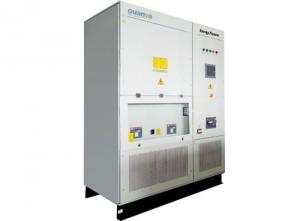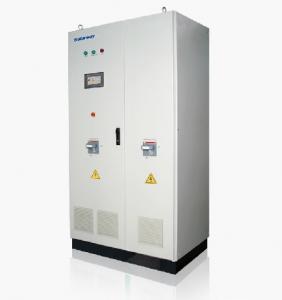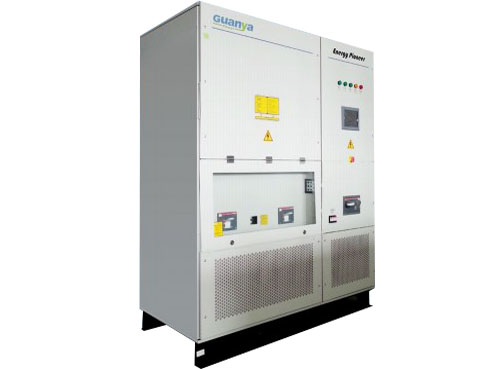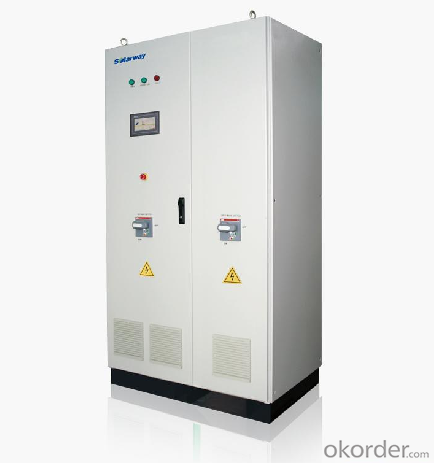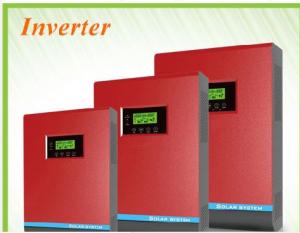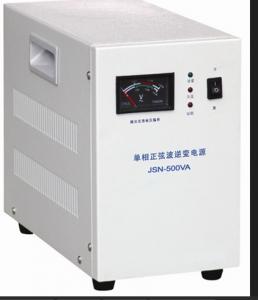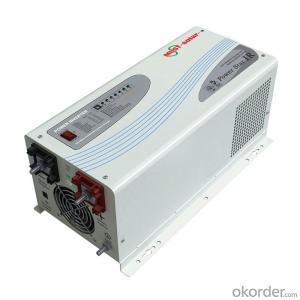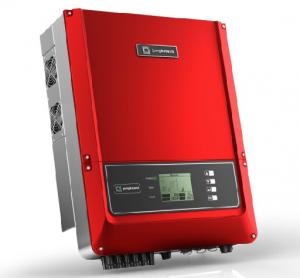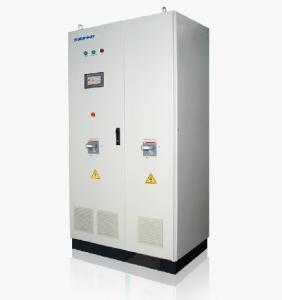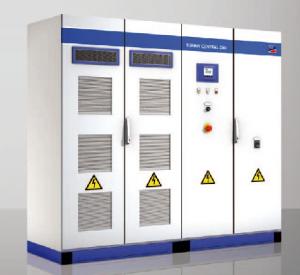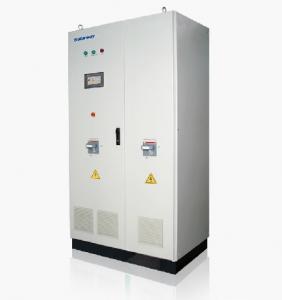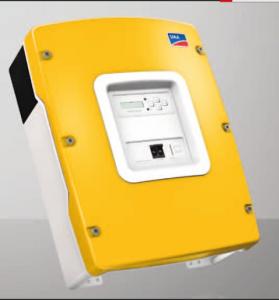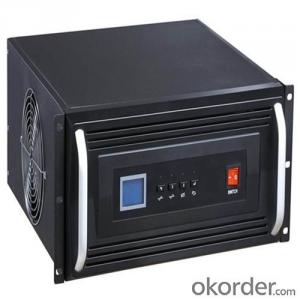LVRT PV On-grid Inverter GSG-500KL from CNBM China
OKorder Service Pledge
OKorder Financial Service
You Might Also Like
Description:
CNBMSOLAR is a world-leading and Vertical integrated manufacturer of high-performance with Silicon,
Wafer, Cells, Modules, which convert sunlight into electricity for residential, commercial, and utility-scale
power generation.
The capacity of CNBMSOLAR is reach to 1GW, and make sure each year our shipment capacity is more
Than 700-800MWs, at the same time, we have set up the largest solar power station with our partner
in Ukraine.
CNBM is a Quality + Service oriented company with“Excellence at Each Step” approach, composed of
the finest components from TUV and IEC-certified partners around the world, CNBM modules consistently
undergo a variety of trials at the company’s Test & Development Centre, ensuring peak performance
capabilities. The company is committed to develop and provide the world with clean and renewable energy
to ease the energy shortages as well as human kind’s impact on the environment
Technicalparameters
Electrical plant
Items | Parameters | |
DC input | Maximum DC input power (KWp) | 550kW |
Maximum PV open-circuit voltage(VDC) | 1000VDC | |
Maximum PV array input current(A) | 1250A | |
DC input voltage range (VDC) | 0~1000VDC | |
MPPT voltage range (VDC) | 500~850VDC | |
AC output | Rated output power (KW) | 500kW |
Operating voltage range (Vac) | 315Vac | |
Operating frequency(Hz) | 47.5~51.5Hz | |
Maximum efficiency(%) | 98.6% | |
Power factor | ≥0.99 | |
THD(%) | <3% | |
Self-consumption at night(W) | <80W | |
Noise emission | ≤65dB(1m) | |
Protection function | Protection rating | IP20(indoor) |
Over/Under voltage protection | Yes | |
Over/under frequency protection | Yes | |
Anti-islanding protection | Yes | |
Over current protection | Yes | |
Polar reversed wiring protection | Yes | |
Overload protection | Yes | |
Usage environment | Usage temperature range | -20℃~+55℃ |
Storage temperature range | -40℃~+65℃ | |
Usage relative humidity | 0~95%RH | |
Altitude | 3000m |
Mechanical plant
Items | parameters |
Dimension (W/H/D) | 950*2000*2140mm |
Weight | 1.423t |
Human-machine interface and communication
Items | Parameters |
Display | LCD-Touch |
Standard communication | RS485 |
Optional communication | GPRS, Ethernet |
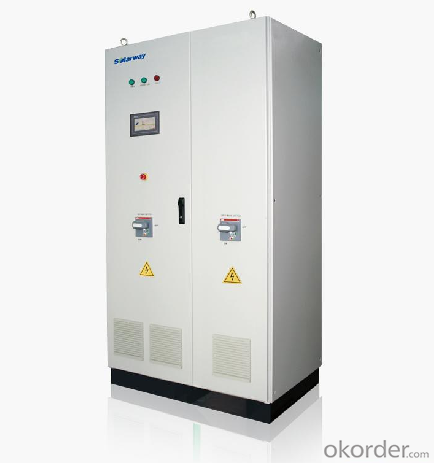
FAQ:Could you pls introduce more about CNBM?
CNBM Group is short for China National Building Materials Group Corporation, which is established in 1984 with approval from the State Council
CNBM Group is the largest comprehensive building materials industry group in China
The Group has a total asset of over RMB 360 billion, more than 180,000 employees and 17 subsidiaries
- Q: What are the safety measures to consider when installing a solar inverter?
- When installing a solar inverter, several safety measures should be considered. Firstly, it is important to ensure that the installation is performed by a qualified and certified professional to minimize the risk of accidents. It is crucial to follow the manufacturer's guidelines and recommendations during the installation process. Additionally, it is essential to disconnect the solar inverter from the power source before starting any installation or maintenance work to prevent electrocution. Proper grounding and wiring techniques should be followed to reduce the risk of electric shock or fire hazards. Adequate ventilation and temperature control should be provided to prevent overheating of the inverter. Regular inspections and maintenance checks should be conducted to ensure the inverter's safe and efficient operation. Overall, prioritizing safety measures during the installation process is crucial to protect both the installer and the system's end-users.
- Q: What is the role of a galvanic isolation transformer in a solar inverter?
- The role of a galvanic isolation transformer in a solar inverter is to provide electrical isolation between the photovoltaic (PV) array and the inverter's AC output. This isolation is crucial for safety and protection, as it prevents any electrical faults or surges from the PV side from affecting the AC side or the grid. It also ensures that any ground faults or leakage currents are contained within the PV system, minimizing the risk of electric shock and damage to equipment.
- Q: What are the safety certifications to look for in a solar inverter?
- When considering a solar inverter, it is important to look for safety certifications such as the UL 1741 standard for grid-tied inverters, which ensures compliance with safety and performance requirements for electrical equipment. Additionally, certifications like IEC 62109 and CSA C22.2 No. 107.1 demonstrate compliance with international safety standards. It is also advisable to check for certifications related to electromagnetic compatibility (EMC) and protection against overvoltage or overcurrent situations.
- Q: How does a solar inverter ensure safety during maintenance?
- A solar inverter ensures safety during maintenance by incorporating various safety features such as automatic shut-off mechanisms, grounding protection, and isolation of high-voltage components. Additionally, it may have user-friendly interfaces and clear warning labels to guide technicians while working on the equipment. These measures help prevent electrical hazards and ensure the safety of maintenance personnel.
- Q: How does a solar inverter handle variations in solar irradiation?
- A solar inverter handles variations in solar irradiation by continuously monitoring the amount of sunlight received and adjusting the conversion of direct current (DC) power generated by the solar panels into alternating current (AC) power accordingly. It does this by employing maximum power point tracking (MPPT) algorithms that optimize the power output from the panels, ensuring maximum efficiency regardless of the fluctuations in solar irradiation.
- Q: What are the key features to consider when purchasing a solar inverter?
- When purchasing a solar inverter, some key features to consider are the capacity and efficiency of the inverter, its compatibility with your solar panel system, the type of inverter technology used (such as string or microinverters), the warranty and reliability of the brand, and any additional features or smart capabilities offered by the inverter.
- Q: Can a solar inverter be used with a solar-powered security system?
- Yes, a solar inverter can be used with a solar-powered security system. A solar inverter is responsible for converting the direct current (DC) generated by solar panels into alternating current (AC) that can be used to power electrical devices. In the context of a solar-powered security system, a solar inverter is essential for converting the energy generated by solar panels into usable power to operate the security system's components, such as cameras, sensors, alarms, or communication devices. Therefore, integrating a solar inverter is crucial to ensure the functionality of a solar-powered security system.
- Q: What are the potential risks of overvoltage in a solar inverter?
- The potential risks of overvoltage in a solar inverter include damaging the inverter itself, reducing its lifespan, and potentially causing a fire or electrical hazard. Overvoltage can also lead to the failure of other connected components, such as solar panels or batteries, and may even result in a complete system shutdown. It is crucial to implement protective measures, such as surge protectors or voltage regulators, to mitigate the risks associated with overvoltage.
- Q: Can a solar inverter be used with different types of energy storage systems?
- Yes, a solar inverter can be used with different types of energy storage systems. Solar inverters are typically designed to convert the direct current (DC) generated by solar panels into alternating current (AC) that can be used to power household appliances and other electrical devices. They can be integrated with various energy storage technologies such as batteries, supercapacitors, and flywheels to store excess energy generated by the solar panels for later use. The compatibility between the solar inverter and the energy storage system may depend on factors such as voltage requirements, capacity, and communication protocols.
- Q: Can a solar inverter be used in areas with high electromagnetic radiation?
- Yes, a solar inverter can be used in areas with high electromagnetic radiation. However, it is important to consider the specific requirements and limitations of the inverter as some models may have different tolerance levels for electromagnetic interference. It is recommended to consult the manufacturer's specifications or seek professional advice to ensure proper functioning and safety in such environments.
Send your message to us
LVRT PV On-grid Inverter GSG-500KL from CNBM China
OKorder Service Pledge
OKorder Financial Service
Similar products
Hot products
Hot Searches
Related keywords
